Top>Research>GENOA and the Ecovillage Design Education (EDE)
 Index
Index
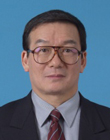
Toshio Ogata [Profile]
Education Course
GENOA and the Ecovillage Design Education (EDE)
Toshio Ogata
Professor of Macroeocnomis and Ecological Economics, Faculty of Economics, Chuo University
1. Prevention of global warming and protection of biodiversity: Challenges in the 21 Century
The United Nations Conference on the Human Environment was held in 1972 in Stockholm and people began to point out the Limit to Growth. The fourth report of the International Panel on Climate Change (IPCC) highlighted the risks of human actions such as high level of economic activities and luxury life styles to accelerate the global warming, which would cause serious disasters. During the World Commission on Environment and Development in 1983, the concept of Sustainable Development, rather than the antinomy of Development or Environment, was established as a globally common arena for global environment protection. In the Conference of the Parties 16 (COP16), which was held in Nagoya in 2010, the Satoyama Initiative was adopted and the Japanese word Satoyama became in the spotlight of the world. The Kyoto Protocol was adopted in the Conference of the Parties 3 (COP3) in Kyoto in 1997. However, the destination of post-Kyoto is still not very clear in the world politics even though 2012 is the last year of the commitment year.
2. United Nations Decade of Education for Sustainable Development (UNDESD)
In order to promote the Sustainable Development, it is necessary for the governments, business communities and educational institutions to work together across countries and regions, to enhance education such as environmental knowledge and to raise awareness among the public. In order to achieve it, the United Nations (UN) set UNDESD from 2005 to 2014 and promotes educational activities in collaboration with various organizations including governments, international organizations, corporations, educational institutions, and Non-Governmental Organizations (NGOs).
Meanwhile, the Findhorn Foundation hosted a conference entitled 'Ecovillages and Sustainable Communities: Model for 21st Century Living' in 1995. It inspired the establishment of the Global Ecovillage Network (GEN) at the UN Conference on Human Settlement in 1996. Later, the Gaia Education, which was developed based on GEN, gathered all researchers/educators who were practicing the ecovillage lifestyle from all over the world and developed a standard curriculum of ecovillage based on the international cases in the field of ecology, economy, spirituality, and sustainable social aspects. The curriculum is called the Ecovillage Design Education (EDE). In October 2005, it was approved by the United Nations Educational Scientific and Cultural Organization (UNESCO) as an important component of UNDESD and is currently introduced in some universities in Europe and USA.
3. Ecovillage activities in Asia
The global ecovillage activities and the network of GEN are expanding at the global level. The Ecovillage Network of the Americas (ENA) in the United States, the GEN-Europe in Europe, and GEN Oceania & Asia were established. At these facilities, the information to establish ecovillages is shared. Many of these facilities also implement the EDE. The Ogata Research Laboratory has been observing the ecovillages in Asia through overseas field researches. The ecovillage in this paper does not refer to an administrative unit of village but refers to the human scale intentional community where human actions coexist with the natural world. In other words, it refers to sustainable life style of the traditional Satoyama in Japan.
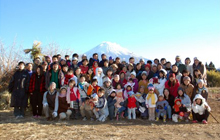
Picture 1 Ecovillage in Japan, Konohana Family
There is a community called Konohana Family in Japan, (Picture 1). The Konohana family manages agricultural producers' cooperative corporation in Fujinomiya City, Sizuoka Prefecture, at the foot of Mt. Fuji. There, about 80 family members beyond blood relations live together and carry out organic agricultural activities such as growing vegetables and rice, and raising chickens. At the GENOA General Assembly, this place was chosen as the GENOA head office from 2012, and it is expected to establish well-organized networks with various parts of Asia and Oceania.
When we carried out field researches in China in 2009, there were 24 villages the government approved as ecovillages. By 2011, the number had increased to 107, and each planed community presented its political characteristics. In Shandong province (Ai Jia Cun), the villagers set the goals of cleanup, greening and modernization for their community. They installed solar water heaters on the roofs and use the warm water shower after farming every day. In the underground, they store livestock excretion to generate bio-gas which is used as fuel for heating the house or cooking. In Hunan province (Shuangfeng County), the farmers, who were forced to leave their sloping farmland as a result of the Reconverting Cultivated Land into Forest policy, sometimes created ecological refugees, built their houses and farm land in an ecologically well-balanced manner in the area where they were permitted to live by the government. They were trying to attract travelers who visit the nearby Zhangjiajie (World Heritage Site).
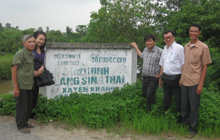
Picture 2 Ecovillage in Nam Dinh Province, Vietnam
In Viet Nam, the Institute of Ecological Economy (Eco Eco) was promoting a mixed farming method (VAC model) in the mountainous, delta, and costal sandy areas to achieve poverty alleviation and environmental protection, while taking advantage of these ecological characteristics. In Vietnamese, V is the initial for fruit farm, A for aquaculture pond, and C for livestock farming. In those communities, all family members were pursuing to create a happy society through organic farming that cyclically utilizes biological resources and waste. Currently, 19 communities are certified as the ecovillage (Lang Sinh Thai). (Picture 2)
4. Asia Internship (Overseas training) and EDE (Experimental learning)
The Ogata Research Laboratory organizes overseas study trip and Asia Internship (overseas training) every summer. It is a practical program which includes social study in local farming villages, tree planting activities, and joint seminars with the universities in Thailand, Viet Nam and Lao PDR that have an international exchange agreement with Chuo University. For the joint seminars, Chuo students prepare for English research papers on environment and rural development and make their presentations on the policy recommendations to the foreign students and then junior researchers at a research institute of Ministry of Environment (ISPONRE) in Viet Nam during the summer break. The Chuo University students also visit local farming villages and ecovillages and conduct questionnaire surveys targeting farmers and residents paired with local students. They also carry out the tree planting activities called 'Japan-Viet Nam Friendship Forest' to facilitate absorption of carbon dioxide by growing trees (to reduce global warming) and to sell trees in 5 years after they are planted. The funds generated through these activities will be saved in 'Ecovillage Fund,' through which the support is provided to build facilities for mixed farming in ecovillages and education of poor communities.
Furthermore, at the Institute of Economic Research of Chuo University, an Ecovillage Design Education (EDE) was implemented on a trial basis. In the class, using the EDE textbooks by the Gaia Education, the students received 5 lectures (Picture 3) in the field of Spirituality, Society, Economy, Ecology, and Holism. They also participated in the ecovillage learning by doing program at the Konohana Family in Fujinomiya City, Shizuoka Prefecture. In order to solve environmental issues, it is important to actually experience the environmentally friendly life style, in addition to obtaining the knowledge. In other words, what they learn from ecovillage or Satoyama is how to solve issues, which cannot be solved by individuals, by organizing intentional communities (symbiotic society) and working in collaboration with others using the power of human bonds. There are some reports that such EDE achieved internationally large educational effects. The practical activities at the Ogata Research Laboratory are published as a book, Towards a Happy Symbiotic Society: Implementation of Ecovillage Design Education (Hilltop Press, 2012), co-edited by Toshio Ogata and Hiroki Matsuya (Picture 4).
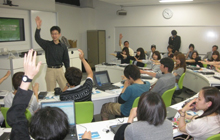
Picture 3 EDE at Chuo University
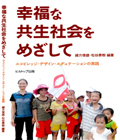
Picture 4 Towards a Happy Symbiotic Society (Hilltop Press)
5. GENOA General Assembly
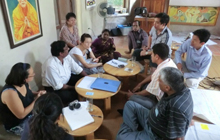
Picture 5 Exchange of opinions of each country at the GENOA General Assembly
The GENOA General Assembly was held in Bangkok, Thailand from November 13 to 16, 2011. I joined the meeting as an observer. There were 14 participants from 8 counties including Thailand, the Philippines, India, Nepal, Bangladesh, Cambodia, Viet Nam and Japan (Picture 5).
The General Assembly began with the reporting of 2011 Ecovillage Activities from various Asian countries. The Philippines, India, Nepal, Bangladesh, and Cambodia made their presentations with the pictures of beautiful nature landscape and traditional culture and reported their activities of eco-tourism and EDE. I learned the trend of ecovillage activities from these reports. At the same time, I succeeded in expanding my information network and personal contacts.
The representative from Viet Nam, for whom this was the first participation in the GENOA General Assembly, reported the background information of how the Institute of Ecological Economy, an ecovillage promotion organization, was established. I also explained the characteristics of the ecovillages in Viet Nam and the types of support provided to them. I also reported the contents of the Asia Internship in Viet Nam by Chuo University, Japan-Viet Nam Friendship Forest, and the contents of Bioregionalism and Ecovillages: Green Economic Corridor and Intentional Community ed. by T. Ogata (Hilltop Press, 2011), which was presented at the Hanoi National Economics University in August, 2010.
Although 21st Century is called 'Asian Age,' the gap is becoming larger between developed and developing countries and urban and rural areas within a developing country, in the wave of globalization. The number of economically weak people is growing and environmental disruption is accelerated. Despite these circumstances, I could see a bright future of 21st Century by learning about convivial ecovillages, or happy symbiotic societies under rich human relationships and the strong power of bonds while maintaining a simple life and by interacting with the GENOA people who promote and lead such a sustainable life style.
Relevant links
- Eco-Products 2011. The largest Environmental Exhibition in Japan.

- Chi no Kairo (The Corridor of Wisdom), an educational program supervised and edited by the author. (Ecological Economics- balance between coexistence and competition (Program 45)

- Chi no Kairo (The Corridor of Wisdom), an education program supervised and edited by the author. Ecological Economics 2.0 - Practice version - (Program 58)

- Eco-products 2010 and proposal for Ecovillage Fund
- Toshio Ogata
Professor of Macroeocnomis and Ecological Economics, Faculty of Economics, Chuo University - Research themes: Global Warming and Ecological Economics Management, EDE, and Asia Internship.
Born in 1945 in Kanagawa Prefecture. Professor at Faculty of Economics, Chuo University. Earned credits required for completing a doctoral program at the Graduate School of Economics, Chuo University.
Coauthor Introduction to Economics for a Symbiotic Society (Nihon Hyoron Sha), coauthor Global Warming and Economic Development (University of Tokyo Press), coeditor, Towards a Happy Symbiotic Society (Hilltop Press), co-translator, Ecovillages: New Frontiers for Sustainability (Nihon Keizai Hyoron Sha), editor, Bioregionalism and Ecovillages: Green Economic Corridor and Intentional Community (Hilltop Press).
Visiting researcher at Rutgers, the State University of New Jersey, 1980 - 82.
Currently, manager of the Institute of Economic Research /Environment and Economy Research Group, board member of CIRIEC, editorial member of the Journal of Post Keynesian Economics.
Homepage: http://jp.ogata-lab.com
- Research Activities as a Member of Research Fellowship for Young Scientists (DC1), Japan Society for the Promotion of Science (JSPS) Shuma Tsurumi
- Important Factors for Innovation in Payment Services Nobuhiko Sugiura
- Beyond the Concepts of Fellow Citizens and Foreigners— To Achieve SDGs Goal 10 “Reduce Inequality Within and Among Countries” Rika Lee
- Diary of Struggles in Cambodia Fumie Fukuoka
- How Can We Measure Learning Ability?
—Analysis of a Competency Self-Assessment Questionnaire— Yu Saito / Yoko Neha - The Making of the Movie Kirakira Megane








